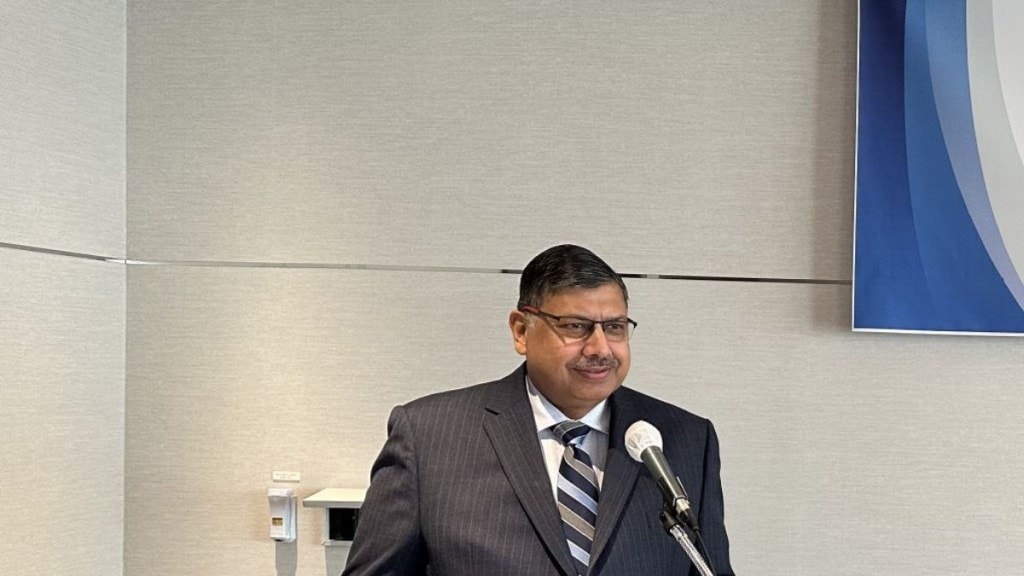With India’s growth momentum facing headwinds from US trade policies, monetary policy committee member Nagesh Kumar, in an interview with Mahesh Nayak, stressed the need for a prompt shift in the policy stance and a multi-pronged policy response to protect MSMEs, diversify exports and support domestic demand. Excerpts:
Your stance changed from neutral to accommodative. What prompted this shift, and how do you see the policy stance evolving in the future?
The benign inflation outlook opens up the policy space for monetary action. However, as the transmission of existing actions is still unfolding, there was a case for a pause for the moment. Yet, I felt that we may go for changing the stance from ‘neutral’ to ‘accommodative’ to signal the readiness of the monetary policy to support the industry, investments and growth.
What’s holding back private investments even as government capex and consumption drive growth?
The growth rate of 7.8% in the first quarter was impressive, exceeding expectations, leading to an upward revision of projections for the year to 6.8% from 6.5%. The acceleration in Q1 growth was underpinned by consumption, especially rural consumption, and front-loading of government capex. But private investment continues to remain sluggish due to the trade policy uncertainties. Recent moves by the Trump administration have raised concerns for India’s economic outlook. These include 25% reciprocal and 25% penal tariffs on Indian exports, a steep $100,000 fee on H-1B visas, and proposed measures like the HIRE Act targeting outsourcing and a 100% tax on patented pharmaceuticals. These uncertainties are making corporates wary of committing to new capital expenditure, despite strong domestic fundamentals.
Why do these US trade policy measures pose a challenge for India’s economy?
The US is India’s largest trade partner and top export market, accounting for 20% of merchandise exports and 33% of labour-intensive goods like textiles, garments, leather, gems & jewellery, and processed foods. These sectors are dominated by MSMEs and contribute nearly 40% of manufacturing jobs. While the impact of recent US trade measures may shave 40–60 bps off India’s growth rate, the deeper concern lies in employment and MSME viability. High penal tariffs and restrictive policies disproportionately affect labour-intensive exports, posing a significant risk to jobs and small businesses that rely heavily on US demand.
What should India’s policy response be to these challenges?
India’s policy response must be multi-pronged. First, ongoing negotiations with the US aim to reduce punitive tariffs to more reasonable levels. Second, domestic markets for labour-intensive goods need deeper penetration, aided by recent GST reforms to boost consumption. Third, India must shield its industries from dumping of cheap Chinese goods — a challenge already prompting action in Southeast Asia, including Thailand and Indonesia. Protecting MSMEs and jobs is critical. The Prime Minister’s ‘vocal for local’ call is timely, reinforcing the need to strengthen domestic demand and resilience amid global trade headwinds.
What steps must India take to diversify tariff risks?
Diversification of export markets beyond the US is critical. In that context, the recent signing of the UK-India FTA and the India-EFTA Economic and Trade Agreement that became effective on October 1 are important developments. Negotiations on the India-EU FTA have been expedited, and new ones have been planned with the Eurasian Economic Community. All these will open up access to virtually the entire European market for Indian goods, especially labour-intensive goods, some of which currently attract peak tariffs. We should also tap the potential of existing FTAs with Japan, the Republic of Korea, Australia and the UAE more effectively for export of labour-intensive goods, helping reduce our dependence on the US market.
How can India move up the value chain in labour-intensive sectors?
Acquiring global brands, expanding retail networks, and upgrading technology are key for India to move up the value chain. Indian industry needs to pay adequate attention to innovation and product development through enhancing R&D activity and brand-building globally.
What support measures are being considered for MSMEs?
MSMEs are set to receive support through liquidity infusion, credit guarantees, and possible moratoriums, with a government relief package currently in the works.

